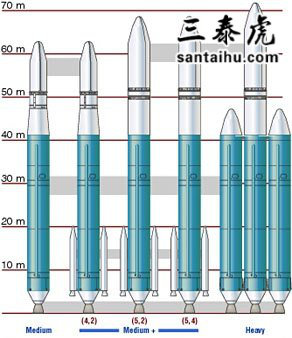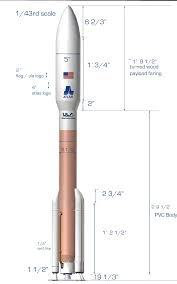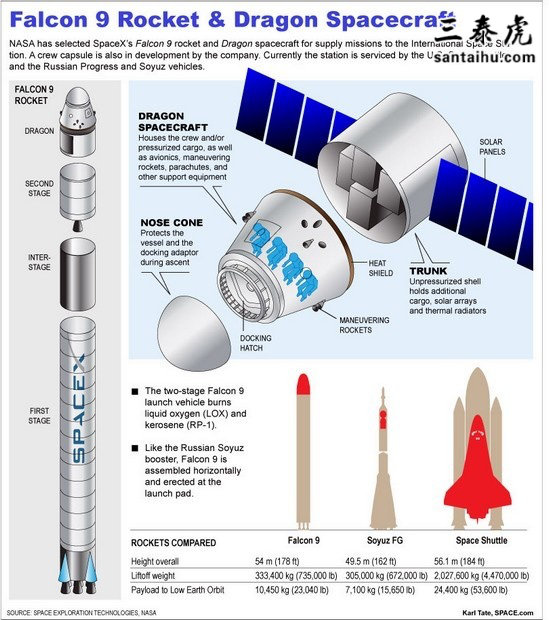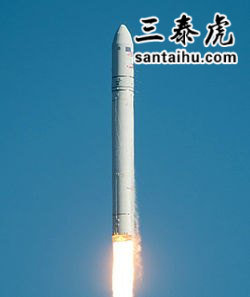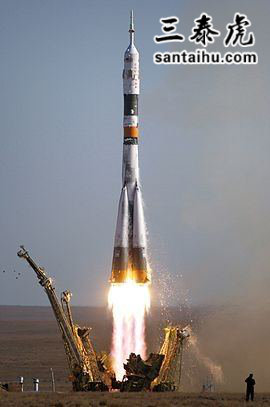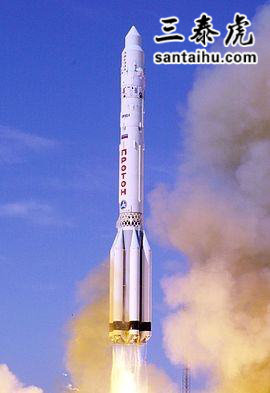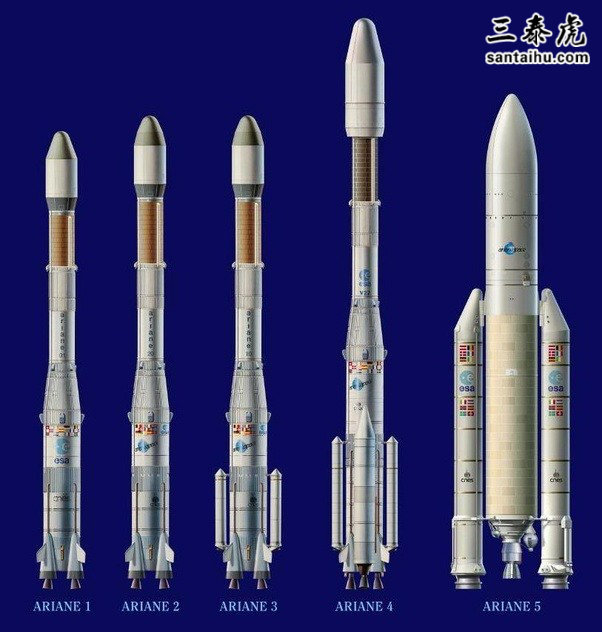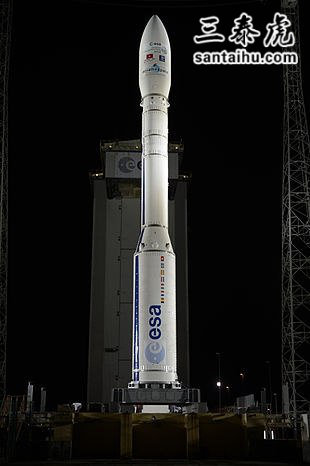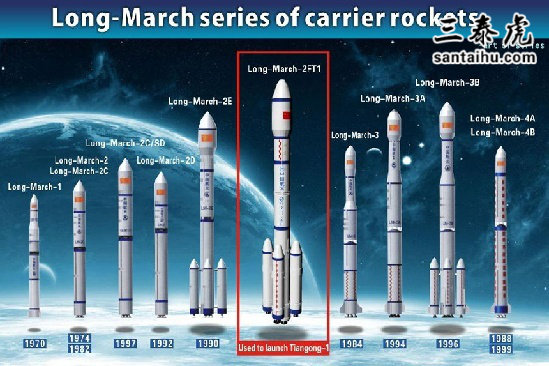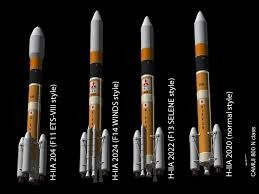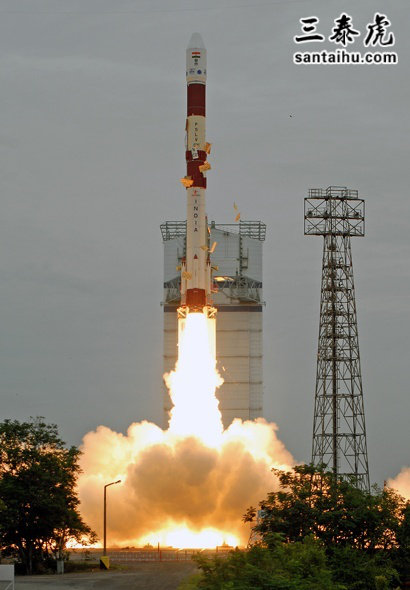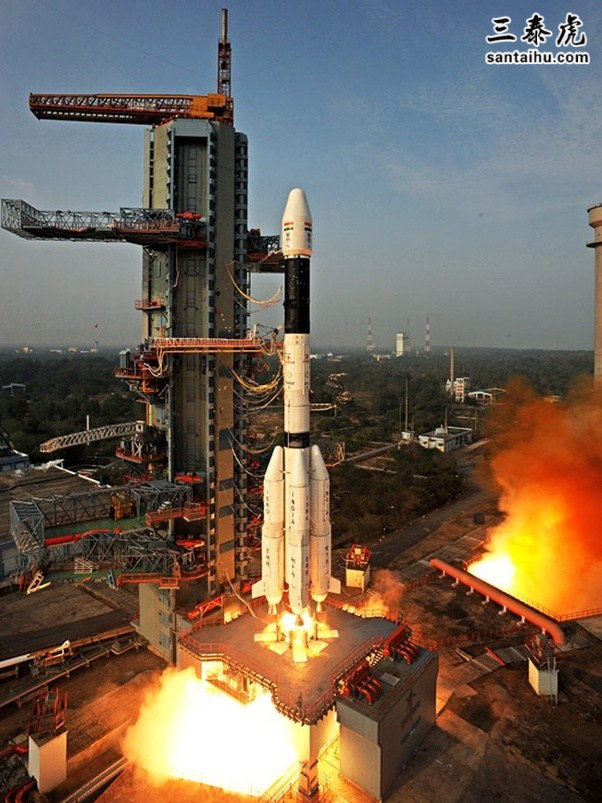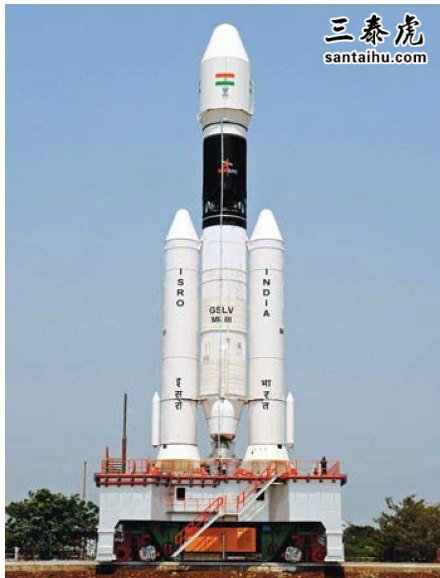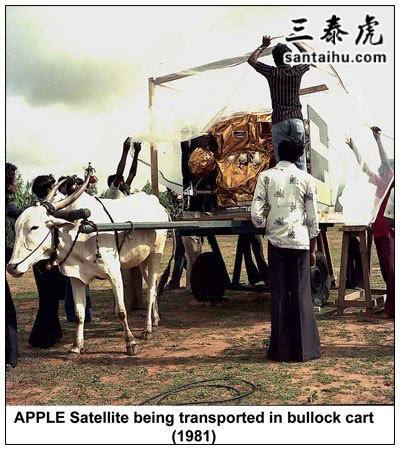美版知乎:如果对各国宇航局进行排位,印度ISRO能排第几名
If space agencies are ranked, where will ISRO stand?如果对各国宇航局进行排位,印度的ISRO能排在第几位? Quora读者的评论:Ayush Jai
If space agencies are ranked, where will ISRO stand?
如果对各国宇航局进行排位,印度的ISRO能排在第几位?
Quora读者的评论:
Ayush Jain, Space Fanatic, Daydreamer
I am going to answer your question based on various parameters. First of all we do not have any experience in the department of manned spacecrafts and believe me, its a big deal.
First of all lets take into account the launch vehicle of various space agencies as it is the basic need to launch anything into space . Lets rank them based on the criteria of payload to LEO ( Low Earth Orbit) :
我会基于各种参数来回答你的问题。首先,我们没有任何载人航天的经验,相信我,这一点非常重要。
首先,我们对比一下各国航天局的运载火箭,因为火箭是把任何东西发射到太空的基本需要。我们来根据近地轨道有效载荷的标准对它们进行一下排序:
- NASA :
( I am also taking into account Spacex because its a american company which works mainly for the US govt. and has also received huge funds from them )
The Delta family :
Owned by the United Launch Alliance , delta rocket family has been in service since 1960 and has over 300 launches under its belt.
The two active systems are :
The Delta II and the Delta IV
- 美国国家航空航天局(NASA):
(我把Spacex也一起进行了比较,因为这是一家美国公司,主要为美国政府服务,也从美国政府那里获得了巨额资金)
德尔塔家族:
德尔塔火箭家族隶属于联合发射联盟,自1960年以来一直在服役,已经发射了300多次。
两个比较常见的系统分别是:
德尔塔II和德尔塔IV
Payload Capacities (LEO) :
Delta II : 2700 - 6100 Kgs
Delta IV: 9420-20,790 Kgs
到达近地球轨道的有效载荷:
德尔塔II: 2700 - 6100公斤
德尔塔IV: 9420-20,790公斤
Next is the Atlas family of rockets:
It too is operate by the ULA. It has close to 500 launches under its belt and the Atlas V launch vehicle is still in use .This is the rocket which launched the soon to arrive at Pluto the New Horizons probe back in 2005.
下一个是阿特拉斯系列火箭:
它也是由联合发射联盟运作的。迄今已完成了近500次发射任务,“阿特拉斯5号”运载火箭现在仍在运行。这个火箭在2005年发射了不久将抵达冥王星的“新地平线号”探测器。
Payload Capacity (LEO) : 9800- 18,810 Kgs
Now we have the spacex launch vehicle the falcon 9 v1.1 which is fairly new but is being used to launch the Cargo Resupply Vehicle i.e. Dragon to the ISS.
到达近地球轨道的有效载荷: 9800- 18,810公斤
现在我们来看看spacex的运载火箭猎鹰9号v1.1,这是一个相当新的运载火箭,它被用来将货物补给火箭,比如“龙”号飞船发射到国际空间站。
Payload Capacity ( LEO) : 13,150 Kgs
Spacex also has a heavier version of the Falcon 9 under development christened as Falcon heavy which is expected to have a payload capacity (LEO) 53,000Kgs.
到达近地球轨道的有效载荷: 13,150公斤
Spacex公司还在研发猎鹰9号的重型版本,命名为猎鹰重型,预计有效载荷将达到53,000公斤。
ANTARES:
心宿二火箭:
Antares is an expendable launch system developed by Orbital Sciences Corporation (now Orbital ATK) to launch the Cygnus spacecraft to the International Space Station as part of NASA's COTS and CRS programs.
Payload Capacity(LEO): 6100 Kgs.
心宿二火箭是轨道科学公司(现在的轨道ATK)开发的一次性发射系统,作为美国宇航局COTS和CRS计划的一部分,将天鹅座太空船发射到国际空间站。
到达近地球轨道的有效载荷: 6100公斤。
Under Development:
The Space Launch System (SLS):
It is an American Space Shuttle-derived heavy expendable launch vehicle being designed by NASA. It follows the cancellation of the Constellation program, and is to replace the retired Space Shuttle.
It will be developed in stages. The block I will have the capacity to lift a payload of 70 tonnes to the LEO, whereas the Block II would be able to lift 130 tonnes.
尚在研发中的项目:
太空发射系统:
这是由美国宇航局设计的美国航天飞机衍生的重型消耗性运载火箭。是在星座计划被取消后推出的,将取代退役的航天飞机。
这个系统将分阶段开发。I型火箭将有能力向LEO发射70吨的有效载荷,而II型火箭将有能力发射130吨。
Vulcan:
The Vulcan is a rocket launch vehicle that is currently under development by the United Launch Alliance. It will feature reusable rocket engines which will detach from the lower stage and descend back to earth and will be recovered with the help of a helicopter.
In 2015, ULA stated its goal was to sell a "barebones Vulcan" for half the price of a basic Atlas V rocket.
There are many more rockets or rocket families which are active/under development but these are the major one's .
火神:
火神是目前正由联合发射联盟开发的一种火箭运载工具。它将配置可重复使用的火箭发动机,这些发动机将从较低的一级分离并落回地球,并将在直升机的帮助下回收。
2015年,联合发射联盟表示,它希望“火神”的售价能降到阿特拉斯V型火箭价格的一半。
还有更多的火箭或火箭家族正在使用/正在研发中,但这些是主要的。
Note :
- NASA operated the heaviest and most powerful rocket ever , the Saturn V which took us to the moon . It had the power to carry a 118,000Kg payload to the LEO.
- It also operated the first reusable launch vehicle in history of spaceflight, the space shuttle. Payload Capacity to LEO : 24,400 Kg
注:
- 美国宇航局发射了史上最重、最强大的火箭—土星V,将我们送上了月球。它有能力携带11.8万公斤的有效载荷到近地球轨道。
- 它还发射了航天史上第一个可重复使用的运载火箭——航天飞机。到达近地球轨道的有效载荷能力:24,400公斤
Next in line has to be the Russian Space agency formerly the Soviat Union.
接下来是俄罗斯航天局,前身是苏联。
- ROSCOSMOS :
It has a huge history and hold a lot of FIRSTS in the history of space flight.
Its main workhorse is the Soyuz Rocket family which has been in service for quite a huge amount of time. The Soyuz is the most frequently launched rocket in the world
- 俄罗斯宇航局:
它有着悠久的历史,在太空飞行史上创造了许多第一的记录。
它的主力是联盟号火箭家族,已经服役了相当长的时间。联盟号是世界上发射频率最高的火箭
Soyuz FG :
联盟号运载火箭
Payload to the LEO : 7100 Kg
This rocket is used to launch astronauts to the ISS.
到达近地球轨道的有效载荷:7100公斤
这枚火箭是用来把宇航员送入国际空间站的。
Proton:
质子号运载火箭
Proton is an expendable launch system used for both commercial and Russian government space launches. The first Proton rocket was launched in 1965. Modern versions of the launch system are still in use as of 2015, making it one of the most successful heavy boosters in the history of spaceflight. All Protons are built at the Khrunichev State Research and Production Space Center plant in Moscow, transported to the Baikonur Cosmodrome.
质子号是一次性发射系统,用于商业发射和俄罗斯政府的太空发射。第一枚质子火箭于1965年发射。截至2015年,这个发射系统的现代版本的仍在服役,让它成为航天史上最成功的重型助推器之一。所有的质子号运载火箭都是在位于莫斯科的赫鲁尼切夫国家研究和生产太空中心工厂制造的,并运送到拜科努尔航天发射场。
Payload Capacity (LEO): 20.7 tonnes
Proton was used to launch the salyut space stations, the cored module of the MIR space station and the Zarya and Zvezda modules( The Russian Segments) of the ISS.
到达近地球轨道的有效载荷: 20.7吨
质子号被用来发射“礼炮”号空间站、和平号空间站的核心舱以及国际空间站的“曙光”号和“兹韦兹达”号舱(俄罗斯段)。
The Angara rocket family is expected to replace the soyuz.
It has the capacity to launch a payload up to 21000 Kg to LEO.
Note :
- They built the most powerful rocket ever, Energiya. It was cancelled while under development.
- The N-1 rocket was the soviet reply to the Saturn V but it suffered some catastrophic failures .
- The russians also created a counter part to the Space Shuttle know as Buran but it also was cancelled after first few developmental flights due to the dissolution of the soviet union.
安加拉火箭家族有望取代联盟号。
它有能力向近地球轨道发射21000公斤的有效载荷。
注意:
- 他们建造了有史以来最强大的火箭,能源号运载火箭。但在研发阶段被取消了。
- N-1火箭是苏联对土星五号的回应,但它也遭遇了一些灾难性的失败。
3.俄罗斯还为航天飞机建造了名为“暴风雪号”的航天飞机,但由于苏联,在经过最初几次研发试飞后,该飞机也被取消了。
- ESA ( European Space Agency )
ESA is an intergovernmental organisation of 20 member states.
Its Ariane rocket family is responsible for more than 70 % of the international contract based launches.
- 欧洲航天局
欧空局是一个由20个成员国组成的政府间组织。
其阿丽亚娜火箭家族负责执行70%以上的国际发射订单。
Ariane 5 has had a 100% success rate in the last 10 years.
Payload Capacity (LEO) : 16,000-21,000 Kg.
阿丽亚娜5号在过去10年里保持着100%的成功率记录。
到达近地球轨道的有效载荷: 16,000-21,000 Kg。
VEGA:
织女星运载火箭
Vega (Advanced Generation European Carrier Rocket) is an expendable launch system in use by Arianespace jointly developed by the Italian Space Agency and the European Space Agency.
It is equipped with three solid rocket stages.
Payload Capacity (LEO): 2500 KGs
Note :
Most of the Indian communication satellites which weigh more than 2000 Kgs and have to placed in the GTO are launched atop the Ariane 5 rocket .
织女星(欧洲先进一代运载火箭)是由意大利航天局和欧洲航天局联合开发的阿丽亚娜太空公司使用的一次性发射系统。
它装备有三个固体火箭级。
到达近地球轨道的有效载荷: 2500公斤
注:
大多数重达2000公斤以上,必须进入地球同步转移轨道的印度通信卫星,都是由阿丽亚娜5号火箭发射的。
- CNSA (Chinese National Space Administration ):
Chinese space agency has the Long March family of rockets.
- 中国国家航天局:
中国航天局拥有长征系列运载火箭。
The most powerful one ( currently active ) has the power to loft around 12,000 kg to the LEO.
这是(目前活跃)的到达近地球轨道的有效载荷达到12000公斤的最强大的火箭。
- JAXA ( The japanese space agency )
The H- IIA is the active japanese rocket which superseded the H -II rocket. It has a success rate of 95 % till date.
- 日本宇宙航空研究开发机构
H- IIA是日本现役火箭,它取代了H- ii火箭。到目前为止,它的发射成功率为95%。
Payload Capacity ( LEO) : 10,000 - 15,000 Kg
到达近地球轨道的有效载荷: 10000 - 15000千克
- ISRO ( Indian Space Research Organisation )
Isro currently has only one vehicle which is completely active :
PSLV ( Polar Satellite Launch Vehicle)
It has launched 71 spacecrafts into various orbits which include some notable payloads such as the Mars Orbiter Mission and the Chandrayaan mission.
6.印度空间研究组织
Isro目前只有一部活跃在役的运载火箭:
极轨卫星运载火箭
它已经发射了71艘航天器进入不同的轨道,其中有些发射任务很出名,如火星轨道探测器任务和月船任务。
Payload capacity (LEO) : 3250 Kg
Its a very reliable launch vehicle and in 2008 launched 10 satellites in one go.
到达近地球轨道的有效载荷: 3250千克
它是一个非常可靠的运载火箭,2008年单次任务同时发射了10颗卫星。
Under Development :
GSLV ( Mk I & II) :
These have a cryogenic upper stage. Mark I had a russian cryo stage whereas the Mark II version has an indigenously built cryo engine.
The Mk II has had only a single successful flight that was last year ,
Gslv D5.
尚在研发中的有:
地球同步卫星运载火箭 (Mk I & II):
这些火箭有低温前端阶段。Mark I配置了俄罗斯的低温引擎,而Mark II版本配备了国产的低温引擎。
去年Mk II只成功发射了一次。
地球同步卫星运载火箭 D5
Payload capacity (LEO) : 5000 Kg
到达近地球轨道的有效载荷: 5000公斤
GSLV MkIII :
The GSLV-III features an Indian cryogenic third stage and a higher payload capacity than the current GSLV. A suborbital flight test of the GSLV-III launcher, with a passive cryogenic third stage, was successfully carried out on 18 December 2014, and was used to test a crew module on a suborbital trajectory.
地球同步卫星运载火箭 MkIII:
地球同步卫星运载火箭- III具有印度低温第三级和比当前GSLV更高的有效载荷能力。2014年12月18日,被动低温第三级GSLV-III发射装置亚轨道飞行试验成功进行,并在亚轨道轨道上测试了乘员舱。
Payload Capacity (LEO) : 8000 Kg
到达近地球轨道的有效载荷: 8000公斤
This was a comparison based only on the launch vehicle that these agencies possess. There are many more parameters but the ranking of the agencies will remain the same.
Another major and a very difficult task is orbital rendezvous which is not yet undertaken by ISRO whereas all the others have this capability.
NASA and the ROSCOSMOS have supplied the major parts of the ISS where as JAXA , ESA and the CSA (Canadian Space Agency) have contributed a lot to it and have even sent their astronauts .
The Chinese Space agency have their own space station i.e. The Tiangong 1 and are planning to launch the second (Tiangong 2) in a short while.
At present only three agencies possess the capability for manned missions and these are : NASA , ROSCOSMOS and CNSA.
这只是基于这些机构所拥有的运载火箭进行的比较。还有更多的评比参数,但评级机构的排名将保持不变。
另一个重要和难度极高的任务是轨道交会,ISRO还未实施过,但其他国家都有这个能力。
美国航天局和俄罗斯太空宗族为国际空间站提供了主要部件,日本航天局、欧洲航天局和加拿大航天局为国际空间站做出了很大贡献,甚至派出了宇航员。
中国航天局拥有自己的空间站天宫一号,并计划在短时间内发射第二个(天宫二号)。
目前,只有三个机构具备载人航天任务的能力,它们是:美国宇航局、俄罗斯航天局和国家航天局。
Isro in not involved in the ISS at all as it works on a very small budget and would not have been able to make any huge contribution to it.
On the whole it can be said that ISRO lies in the sixth place behind NASA, ROSCOSMOS, Chinese Space Agency, ESA , and JAXA.
But an Important point is that the motive of ISRO is a bit different from the other agencies. Its primary objective is to advance space technology and use its applications for national benefit. Also the budgets of these agencies actually differ a lot so its not entirely fair to rank these agencies. They all are doing an excellent work and bidding collectively for advancement in space technology.
印度空间研究组织完全没有参与国际空间站的工作,因为它的预算非常小,无法对空间站做出巨大的贡献。
总的来说,印度空间研究组织排在美国航天局、俄罗斯太空总署、中国航天局、欧洲航天局、日本航天局之后,位列第六。
但重要的一点是,印度空间研究组织的目标与其他机构有所不同。它的主要目标是推动空间技术,并利用其应用造福于国家。此外,这些机构的预算实际上相差很大,所以对这些机构进行排名并不完全公平。他们的工作都很出色,为空间技术的进步一起努力。
Ritvik Khattar
Updated Sep 3, 2015
Originally Answered: How does India's space program compare with space programs of other countries?
Water was discovered on moon by ISRO not NASA.
India's space mission to mars is designed and implemented at a cost one third of a Hollywood movie about space exploration (Gravity) and is expected to cost same as an auto fare, that is Rs 10 per km. (Thanks User)
India is now a regular medium for countries like Germany Korea Japan and France to launch and deploy their satellites into space. ( Japanese and French ssatellites were deployed by ISRO's last launch).
最初的回答的问题是:印度的太空计划与其他国家相比,实力如何?
在月球上发现水的是印度空间研究组织而不是美国航天局。
印度的火星太空任务的设计和实施成本仅为好莱坞太空探索题材电影(地心引力)的三分之一,希望能做到和汽车票价一样的价格,即每公里10卢比。
印度现在是德国、韩国、日本和法国等国家向太空发射和部署卫星的常规媒介。(日本和法国的卫星就是通过印度空间研究组织上次发射的)。
Update :-
Recently ISRO helped US launch one of the heaviest payloads. (US is the 20th country to launch commercial satellite via ISRO)
India now has the largest fleet of remote sensing satellites in the world.
Coming down to some numbers, India's mars mission costed about 69 million dollars and took about 18 months of preparation compared to 5 years and about 670 million dollars took by NASA for their mars mission.
On similar lines India's mission to moon took about 59 million dollars which is about 10% of NASA's budget for its similar mission to moon.
更新:
最近印度空间研究组织帮美国发射了最重的有效载荷之一。(美国是第20个通过ISRO发射商业卫星的国家)
印度现在拥有世界上最大的遥感卫星组。
最后来看一些数字,印度的火星任务花费了6900万美元,用了18个月的准备时间,而美国宇航局的火星任务花费了大约6.7亿美元。
同样的,印度的探月任务花费了大约5900万美元,只有美国宇航局登月任务预算的10%。
Sanket Shah, Space Enthusiast
Answered Aug 1, 2015
Originally Answered: Where does India stand/rank in the world's space exploration programs?
I'd divide this in a tier system.
Tier-1
They are the world leaders. They do the best missions and gave maximum resources. This would contain NASA and the Russian agency. They lead the world when it comes to space missions. NASA surged ahead since 90s due to economic and political stability of the USA. Today USA has private companies like SpaceX & Orbital Sciences Corps with serious launch capabilities.
最初的回答的问题是:印度在世界太空项目中排名如何?
我想用等级系统来说明。
第一梯队
他们是世界领袖。他们完成了最好的任务,提供了最大的资源。其中包括了美国宇航局和俄罗斯太空总署。他们在太空任务方面领先世界。由于美国经济和政治的稳定,美国宇航局自90年代以来取得了飞速发展。如今,美国拥有SpaceX,Orbital Sciences Corps等拥有强大发射能力的私营公司。
Tier-2
These are the second best agencies. This would contain European Space Agency, Canadian Space Agency & Japanese JAXA. It helped to have Europe working together. They have some highly complex missions like Cassini, Hayabusa, Rosetta/Philae etc under their belt where the beat the tier-1 agencies.
China and India are making serious attempts to enter this club. China has made leaps and bounds in manned space missions and India has its forte in Remote Sensing and interplanetary missions.
第二梯队
这些航天局紧随美国和俄罗斯。其中包括了欧洲航天局、加拿大航天局和日本航天局。它让欧洲携手努力。他们完成了一些高度复杂的任务,如卡西尼号、隼鸟号、罗塞塔/菲莱号等,超过了第一梯队的航天局。
中国和印度正在努力跻身这个团体。中国载人航天事业实现了跨越式的发展,印度在遥感、行星际等领域也有自己的优势。
Tier-3
China and India would come in this. They are better than rest of the world but not near the tier-1,2 agencies.
Tier-4
These agencies are going places in their own way. Brazil, Israel, Iran, South Korea would come in this category. They have significant launch capabilities and operate complex satellites.
第三梯队
中国和印度就属于这个梯队。他们超过了世界上其他国家,但距离第一、第二梯队还有一定差距。
第四梯队
这些航天局正通过自己的努力走向成功。巴西、以色列、伊朗、韩国都属于这一梯队。它们具有强大的发射能力,并能处理复杂的卫星。
Kumar Harshit, works at Indian Space Research Organisation
No space agency is better or worse than each other, it all depends on their priorities. As priority of ISRO is to work for the betterment of society of our nation. Doing research is not a prime goal of ISRO. In ISRO the research fields are very limited and are dependent on the needs. MOM or Chandrayaan missions were tried because a time will come when society will need to know a bit more about these planets and possibility of life on them.
But priorities of ESA and CNSA are different. With normal satellite launches they are also dedicated to launch research and experimental satellites. They are trying many new things, which can sometime fail too.
Two different agencies can be compared only if their Priorities as well as funding are same, that’s why no comparison should be made between these agencies.
每个航天局都不会比其他航天局更好或更差,这完全取决于它们各自的优先事项。印度空间研究组织的首要任务是为我们国家的社会进步而努力。技术研究并不是印度空间研究组织的首要目标。印度空间研究组织在研究领域所做的努力非常有限,而且依赖于需求。“火星飞船号”和“月船一号”的任务之所以进行,是因为总有一天,印度社会需要更多地了解这些行星,以及这些行星上是否存在生命的可能性。
但是欧洲航天局和加拿大航天局的优先事项不同。除了正常的卫星发射,他们也致力于发射研究和实验卫星。他们正在尝试许多新事物,有时也会失败。
只有在优先事项和资金相同的情况下,才能对两个航天局之间进行比较,这就是为什么不应该在这些航天局之间进行比较的原因。
Desham Pravesh
All agencies ISRO, ESA and NASA are working fairly for achieving their goals.
ESA is focusing on making its technology competitive and working hard to protect its market share.
NASA is working for developing new technologies but has given up its launching program to private companies like Boeing, SpaceX etc. Currently SpaceX is testing its reusable rocket, which can reduce its launch cost from $62M to $39M.
ISRO has different approach,
(1) ISRO is indigenizing current space tech. It is making its own indigenous rockets, cryogenic engines, navigation, spy & communication satellites.
(2)It is cutting its costs in launch technology. Curently PSLV costs $15M & GSLV costs $36M which are by far cheaper than any other launch vehicles, even cheaper than upcoming Falcon 9.
(3) Testing next generation launch technology to further decreasing its costs like using single launcher for multiple orbit launches, using scramjet engine for minimizing rocket size (40%) and save fuel (70%).
(4) Finally developing RLV-TD a reusable launch vehicle to make space program cheaper and perform advanced space research.
印度空间研究组织、欧洲航天局和美国航天局等为了他们的目标都一样在努力。
欧洲航天局正致力于使其技术更具竞争力,并努力维护其市场份额。
美国宇航局正致力于开发新技术,但是将其发射计划交给波音、SpaceX等私营公司。目前,SpaceX正在测试可重复使用的火箭,这将使其发射成本从6200万降至3900万美元。
印度空间研究组织走得是不同的道路,
(1)印度空间研究组织正将目前的空间技术本土化。它正在制造自己的火箭、低温发动机、导航、间谍和通信卫星。
(2)它正在削减发射技术方面的成本。目前,极轨卫星运载火箭和地球同步卫星运载火箭的成本分别为1500万美元和3600万美元,比任何运载火箭都要便宜得多,甚至比即将推出的猎鹰9号还要便宜。
(3)测试新一代发射技术,进一步降低成本,如采用单发射装置进行多轨道发射,使用超燃冲压发动机将火箭体积最小化(40%),节省燃料(70%)。
(4)最后研制出可重复使用的运载火箭,令航天计划成本降低,并进行先进的空间研究。
Sarvesh Deo Gupta, I always try to do my best.
There is no doubt that Russia,China,USA have more advance technology as compared to India .They are much older in these field ,they have more larger and powerful rockets .we can say that all these country are ahead of india,beside of this India is the only country in the world who got success in its maiden attempt and first in Asia to get succes, leaving behind country like CHINA.not technology wise but team work, hard work,determination........ All these quality make India ahead of all these country.It won't be very long when India will also get success in improving its technologies like all these country by itself.
毫无疑问,与印度相比,俄罗斯、中国、美国有更先进的推进技术。他们在这些领域是老前辈了,他们拥有更大的和更强劲的火箭。我们可以这么说,这些国家都领先于印度,另外,印度是世界上唯一一个首次发射就取得成功的国家,也是亚洲第一个获得成功的国家,领先了像中国这样的国家。这不是因为技术上的智慧,而是因为我们的团队合作,艰苦努力,坚定决心......所有这些品质使得印度领先于所有这些国家。用不了多久,印度也会像所有这些国家一样,成功地改良自己的技术。
Shmuel Gould, space enthuasiat
Answered Oct 7, 2014
Fifth
- NASA*
- RosCosmos*
- China's
- ESA
- ISRO
- JAXA*
- CSA *
- ISA*
- South Korea's*
印度排在第五名。
- 美国宇航局
- 俄罗斯联邦航天局
- 中国航天局
- 欧洲航天局
- 印度空间研究组织
- 日本宇航探索局
- 加拿大宇航局
- 伊朗宇航局
- 韩国宇航局
NASA and RosCosmos are currently fighting for the top position, with only Russia having the capability to bring people to the ISS and NASA's budget being cut to nothing.
I put JAXA first because they actually built a module for the ISS, while CSA only contributed the CanadaArm2. However, the CSA has had more astronauts.
Some say South Korea has a stronger space agency than Israel, but no for two reasons: 1. Israel has had an astronaut. 2. Israel sends far more satellites than SK and it was the 8th country to do so.
美国宇航局和俄罗斯太空总署目前正在争夺头把交椅的位置,只有俄罗斯有能力把人带到国际空间站,美国宇航局的预算被削减得一文不剩了。
我提到日本航天局是因为他们实际上已经为太空站搭建了一个模块,而加拿大航天局只贡献了CanadaArm2。不过,加拿大航天局的宇航员人数更多。
有人说韩国拥有比以色列更强大的太空机构,但我不这么认为,理由有两点:1.以色列已经有了一名宇航员。2. 以色列发射的卫星比韩国多得多,是第8个成功发射卫星的国家。
Jitendra Patel, make web for everone
Updated Mar 7, 2018
ISRO is known for shocking the rest of the world with brilliant accomplishments on a Spartan budget: successfully sending a probe (of their own design and manufacture) to Mars (on their own rocket) on their very first attempt, and successfully testing a scaled prototype of their own space shuttle. Among many other more modest but significant successes of course, but those two in particular have cemented their status as one of the premier space agencies in the world.
印度空间研究组织以在斯巴达式的预算下取得惊人的成就而闻名:第一次尝试成功地(用他们自己设计和制造的)探测器到达火星(用他们自己的火箭),并成功地测试了他们自己航天飞机的比例原型。当然,在许多其他较小但意义重大的成功中,这两个机构尤其巩固了它们作为世界上主要空间机构之一的地位。
Abhishek Tomar, studied at TSS International School
Updated Dec 29
NASA is at the top in the top space organisations, russia stands second, china is 3rd, UK i s 4th and India 5th
India stand on the 5 rank in the top agencies in the world
1)USA
2)Russia
3)China
4)EU
5)INDIA
6)Japan
7)Canada
8)Iran
9)Israel
10)South Korea
美国航空航天局在顶级太空组织中排名第一,俄罗斯位居第二,中国第三,英国第四,印度第五
印度在世界顶级机构中排名第五
1)美国
2)俄罗斯
3)中国
4)欧盟
5)印度
6)日本
7)加拿大
8)伊朗
9)以色列
10)韩国
Abhijit Parashar, Software Developer at JDA Software
Answered Sep 23, 2014
Its 5th. Nasa, soviet union, Europe, China and India. After mom we will be on second position together with soviet. Soviet and Europe have already reached mars once but the cost effectivity we have will bring us to second position. May be chandrayan 2 will leave soviet far behind Coz we had a very successful part one.
印度排名第五。美国,苏联,欧洲,中国和印度。我们很快会和苏联一起位列第二。苏联和欧洲已经到达过一次火星,但我们出色的成本优势将使我们跃升第二位。也许月船2号会把苏联远远甩在身后,因为我们的1号取得了非常大的成功
版权声明
我们致力于传递世界各地老百姓最真实、最直接、最详尽的对中国的看法
【版权与免责声明】如发现内容存在版权问题,烦请提供相关信息发邮件,
我们将及时沟通与处理。本站内容除非来源注明五毛网,否则均为网友转载,涉及言论、版权与本站无关。
本文仅代表作者观点,不代表本站立场。
本文来自网络,如有侵权及时联系本网站。
阅读:
-
1
चाइना में रेडी और ठेले Local shops in china || L...
- 2
- 3
- 4
- 5
- 6
- 7
- 8
- 9
- 10
-
1
चाइना में रेडी और ठेले Local shops in china || L...
- 2
- 3
- 4
- 5
- 6
- 7
- 8
- 9
- 10
